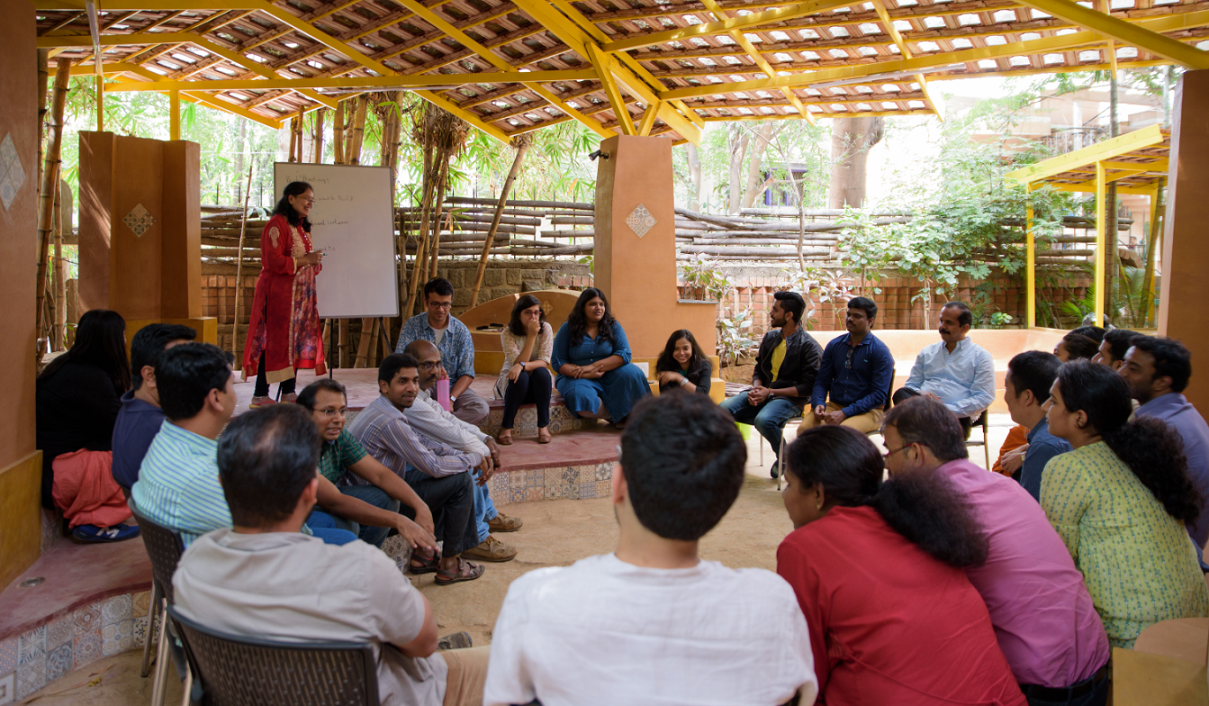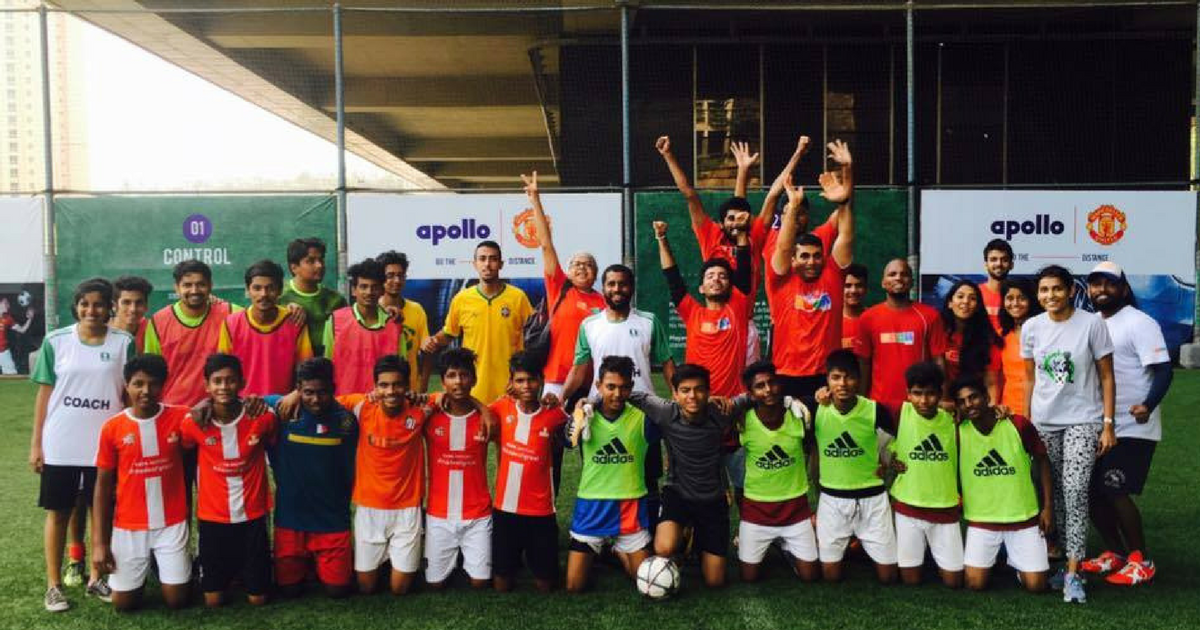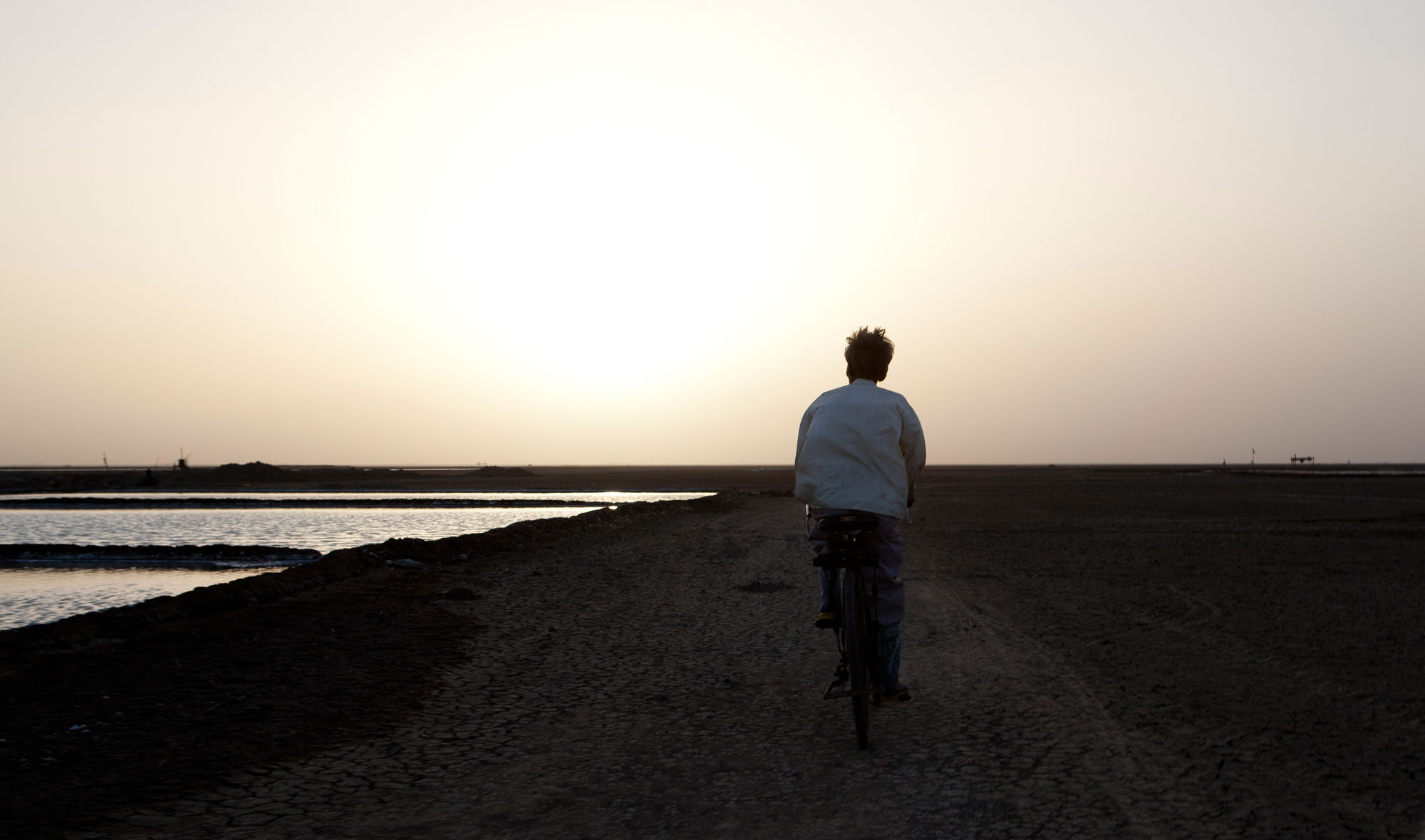Mental health is still not well explored in India, and the discourse around well-being is only slowly picking up. There is still a lot of stigma around these issues, and where there is conversation, it is relegated to an individual or personal level, instead of being seen as something that can be addressed at an organisational level. As a result, even though we might know that there is a strong connection between an individual’s well-being and their ability to create change, we miss the opportunities to create systems and structures that enhance their mental and physical health.
The conversation is relegated to an individual or personal level, instead of being seen as something that can be addressed at an organisational level.
In the social impact space this is in part due to the faulty narrative that people working on social change are doing so because they are driven by a ‘higher purpose’. This, when paired with the reality of a resource scarce environment, ends up negatively affecting policies around work hours, paid leave, and other factors that can build a sense of well-being.
Having said that, more and more, donors are looking at what kind of support their partner organisations need, and how it can be provided. For a lot of funders, this means channelling resources towards leadership development and other capacity building practices, or providing unrestricted grants. While these efforts are necessary and important, as a philanthropic community, we need to understand why active and intentional investment in well-being at an organisational level needs to be approached differently, as well as look at how we can put it into practice.
At Mariwala Health Initiative (MHI) we believe that mental health is inextricably linked to structural inequalities as well as the everyday environmental and social stressors people face. As a result, our policies are based on an examination of the environment we create for our nonprofit partners.
Based on five years of building, evaluating, and tweaking these policies, here is some of what we have learned.
1. Look at every touch-point with partner organisations
Because there is a clear power dynamic between funders and the organisations that apply for a grant, we need to explore ways in which we can reduce stressors and make ourselves more accessible to grantee organisations.
Proposal writing can be stressful, and rigidity with regard to concept notes, pitches, and formats can make it more challenging for organisations to submit their applications. Allowing flexibility with regards to how organisations send concept notes, details about budgetary allocations, and other forms needed, as well as what language they send it in, can go a long way. For instance, funders could allow nonprofits to submit forms in a format followed for another donor—this alone would save the organisation a lot of time and stress.
Being transparent about the process of evaluation and timelines is also critical to minimise concerns around proposal planning and funding horizons. In the same breath, it is important to put in labour to communicate rejection of proposals, and to clearly delineate reasons and understanding of the programme being proposed.
When it comes to programme design, we should, as funders, try to remain cognisant of the fact that every suggestion we make, even outside of a negotiation, comes from a place of power. Foregrounding this reality will allow us to be intentional about the tweaks or changes we suggest. An important rejoinder to this is acknowledging that partners are experts in the ground realities of their work.
Try to remain cognisant of the fact that every suggestion we make, even outside of a negotiation, comes from a place of power.
Similarly, when it comes to monitoring and evaluating programmes, let us think about what we can do to balance the power equation. As funders, we tend to focus a lot on indicators, and while that may not change, can we think about whether we are building out these indicators in partnership with organisations (versus laying them out), how often we revisit them, and whether we have room to tweak them should that be necessary?
Keeping lines of communication open and creating space for partners to ask questions may seem time-consuming, but it goes a long way in building trust and a feeling of comfort.
The organisations we work with aren’t homogenous, and so, instead of having firm guidelines that dictate when you communicate with partners and in what format, it is beneficial to have a more tailored approach. The languages used or the medium and frequency of interaction may differ from one nonprofit to another. For example, one partner may be more comfortable operating over e-mail, while another over the phone. Keeping this in mind, and communicating accordingly helps meet nonprofits in their comfort zone.

As donors, we can work with grantee organisations to build out policies that act as safety nets, and come at little additional cost. | Picture courtesy: Pexels
2. Fund well-being directly
Allocating resources in your grant-making that are meant for self-care and well-being tells partner organisations that this is a priority for you. What’s more, unlike an unrestricted grant, it tells nonprofits that they can and should intentionally invest in employee well-being.
When allocating these resources, we have found it beneficial to remain as flexible as possible. Allow organisations and individuals to use these funds as is required. Some examples include provision of a self-care allowance, or allowances for team-building or excursions. Also important for teams are therapy allowances for personal counselling. For some of the younger and newer partners, it is important to provide additional resources, for example, an option for the founders or core team to go for academic courses or workshops. The choice of availing of this allowance and the type of course should be left up to the partner team.
3. Remember, policies come at no cost
People assume that investing in mental health and well-being costs a lot, but putting down sound policies does not need to be expensive. As donors, we can work with grantee organisations to build out policies that act as safety nets, and come at little additional cost:
- A strong sexual harassment and anti-discrimination policy (based on caste, gender, religion, ability, and sexuality)
- Having mental health leave in addition to sick leave
- Providing insurance—for example, group insurance policies can be taken out by funders on behalf of all their partner organisations
It isn’t enough to simply have policies in place. We need to scrutinise and examine them.
That being said, it isn’t enough to simply have policies in place. We need to scrutinise and examine them. For example, a lot of sexual harassment policies are centred around heterosexuality, which leaves LGBTQ+ employees at the margins; or might require complaints in the form of written reports, which could be difficult for a person with dyslexia. Similarly, organisations miss incorporating caste and/or religion in their anti-discrimination policies.
Lastly, we should look at what we are doing to ensure that our well-being policies extend to the last person on the ground—whether they are frontline workers, volunteers, or part-time employees. Here, it’s also important to say that we can only ask this of our partner organisations if these policies exist in our own organisations.
Changing the narrative around well-being
At the time of this pandemic we are seeing more talk around mental health, particularly around words such as anxiety, fear, and burnout. For the most part, this is happening at an individual level—with people thinking about what they need to do, how to manage their mental health, and examining what their coping mechanisms are. This is despite the fact that mental health is not entirely individual—for example, people have to grapple with the lockdown which is proposed by the external world, the flexibilities that their organisations provide, the privileges they have, or do not have access to, and so on.
Now more than ever, our narrative around mental health and well-being needs to be questioned. These are not individual or person centric issues, but are systemic and influenced by structural inequalities which affect individuals and communities. Challenging them means challenging the idea of resilience as a safety valve, and instead looking at building resilience through structural change, which is necessary for an inclusive future.
—
Know more
- Explore this guide for nonprofits on enhancing mental health and well-being within the workplace.
- Learn more about MHI’s rights-based approach to funding mental health.
- Read about how funders can support their grantees during the COVID-19 crisis.






